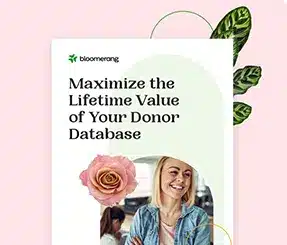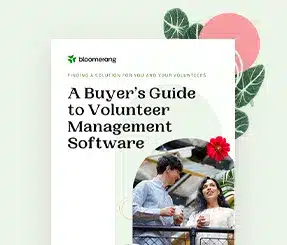Maximizing Nonprofit Efficiency: Tools And Strategies For Smarter Operations


Full Platform Overview Chat With Us



Full Platform Overview Chat With Us




Nonprofit organizations thrive when their operations are efficient, their teams are aligned, and their communities are engaged.
This article explores how nonprofits can leverage tools like organizational chart software and donor databases to streamline workflows, manage teams effectively, and enhance donor relationships. It also highlights the value of focus groups as a strategy for refining programs and improving community impact.
Let’s dive into how to integrate these solutions to maximize your nonprofit’s efficiency and achieve your mission more effectively.
Operational efficiency is crucial for nonprofit organizations aiming to maximize their impact. Here’s why:
Nonprofits focusing on operational efficiency allocate more resources directly toward their mission-critical activities, ensuring that every dollar and volunteer hour contributes effectively to their goals. An organization’s ability to respond swiftly to challenges and opportunities depends on its capacity to adjust strategies as needs evolve.
When administrative tasks are handled efficiently, staff and volunteers also experience reduced burnout and increased job satisfaction. This positive work environment leads to higher retention rates, preserves institutional knowledge, and strengthens the organization’s capacity to serve its community.
In sum, efficiency empowers nonprofits to do more with less, amplifying their reach and effectiveness.
Implementing organizational chart software is a strategic move for nonprofits seeking to clarify roles and enhance team communication. These tools visually represent the organization’s structure, making it easier for staff and volunteers to understand reporting lines and responsibilities.
For many nonprofits, organizational software can make life much easier. They offer the following features:
A well-designed organizational chart can streamline decision-making processes by clearly delineating authority levels within the organization. This structure fosters accountability and collaboration across departments, as team members can easily identify and connect with colleagues relevant to specific projects.
Additionally, organizational charts are valuable tools for onboarding new hires. They provide a clear overview of the team’s composition and help them integrate more quickly.
Effective donor management is at the heart of successful nonprofit fundraising. Utilizing donor databases lets organizations track donor activity meticulously, providing insights into giving patterns, preferences, and engagement levels. This information is greatly beneficial for tailoring communication strategies and ensuring donors feel valued and connected to the cause.’
How do you select the right or first donor CRM?
Ideally, solutions that nonprofits adopt will align with their specific needs and budget constraints. With the right donor CRM, nonprofits can foster stronger relationships with their supporters, leading to increased donor retention and sustained funding streams.
Focus groups are invaluable for gathering insights from stakeholders, donors, and community members. They allow nonprofits to understand their audience’s needs, perceptions, and expectations by encouraging an open dialogue.
This qualitative data is instrumental — it shapes programs and initiatives that resonate with the community.
Organizing effective focus groups for nonprofits involves careful planning. This includes selecting diverse participants, crafting thoughtful questions, and creating a comfortable environment for discussion. Nonprofits should also consider how they will analyze and implement the feedback received to drive meaningful change.
Bringing together organizational chart software, a donor CRM, and focus group insights isn’t just about stacking tools — it’s about creating a well-oiled system that works for your nonprofit.
How can you implement strategies for a cohesive and seamless operational plan? Here are points to consider:
Nonprofits that embrace this integrated approach often experience stronger collaboration, more targeted fundraising efforts, and programs that are more aligned with community needs. Organizations that have successfully combined these tools report increased donor retention, better volunteer coordination, and improved overall operational efficiency.
Leveraging the right tools and strategies is necessary for any modern organization, whether nonprofit or otherwise. The key is not just adopting these tools but weaving them into a holistic approach that enhances every aspect of the organization’s operations.
Nonprofits that adopt and integrate these solutions will meet and exceed their goals, ensuring a more sustainable and far-reaching future.
Are you focused on maximizing nonprofit efficiency? Let us know in the comments.
Comments